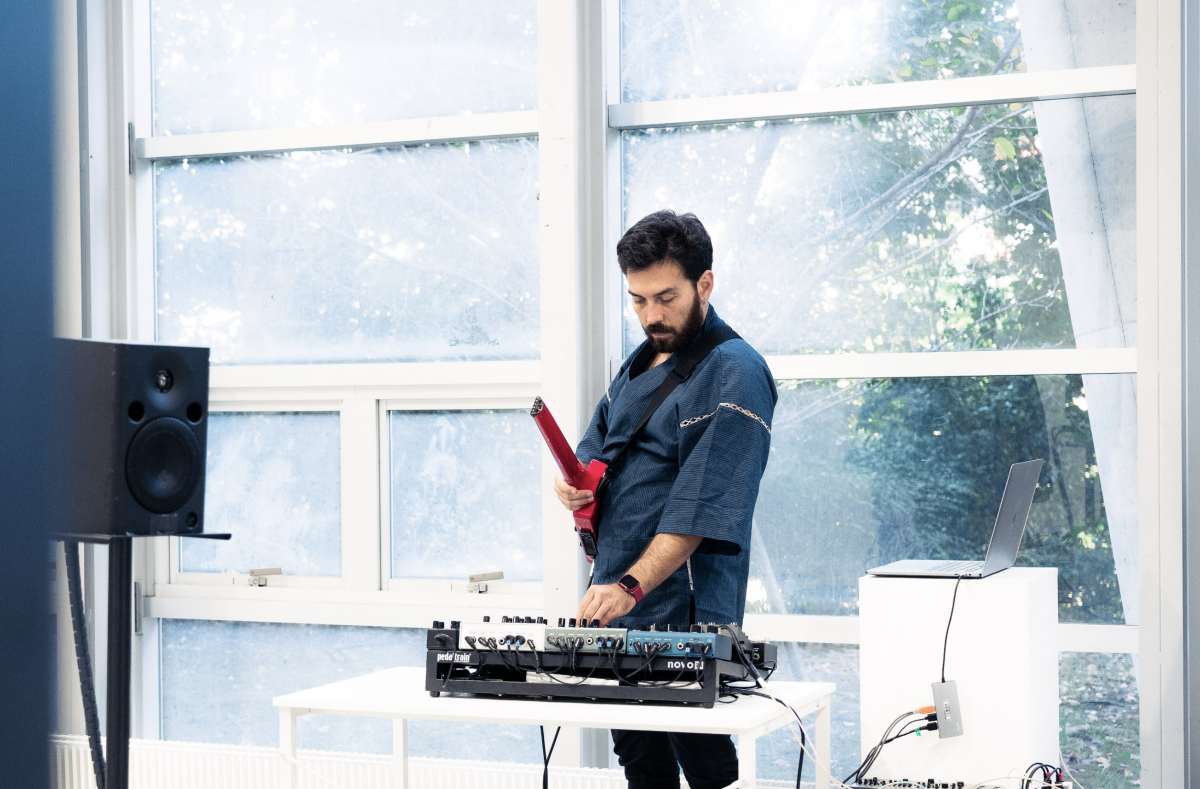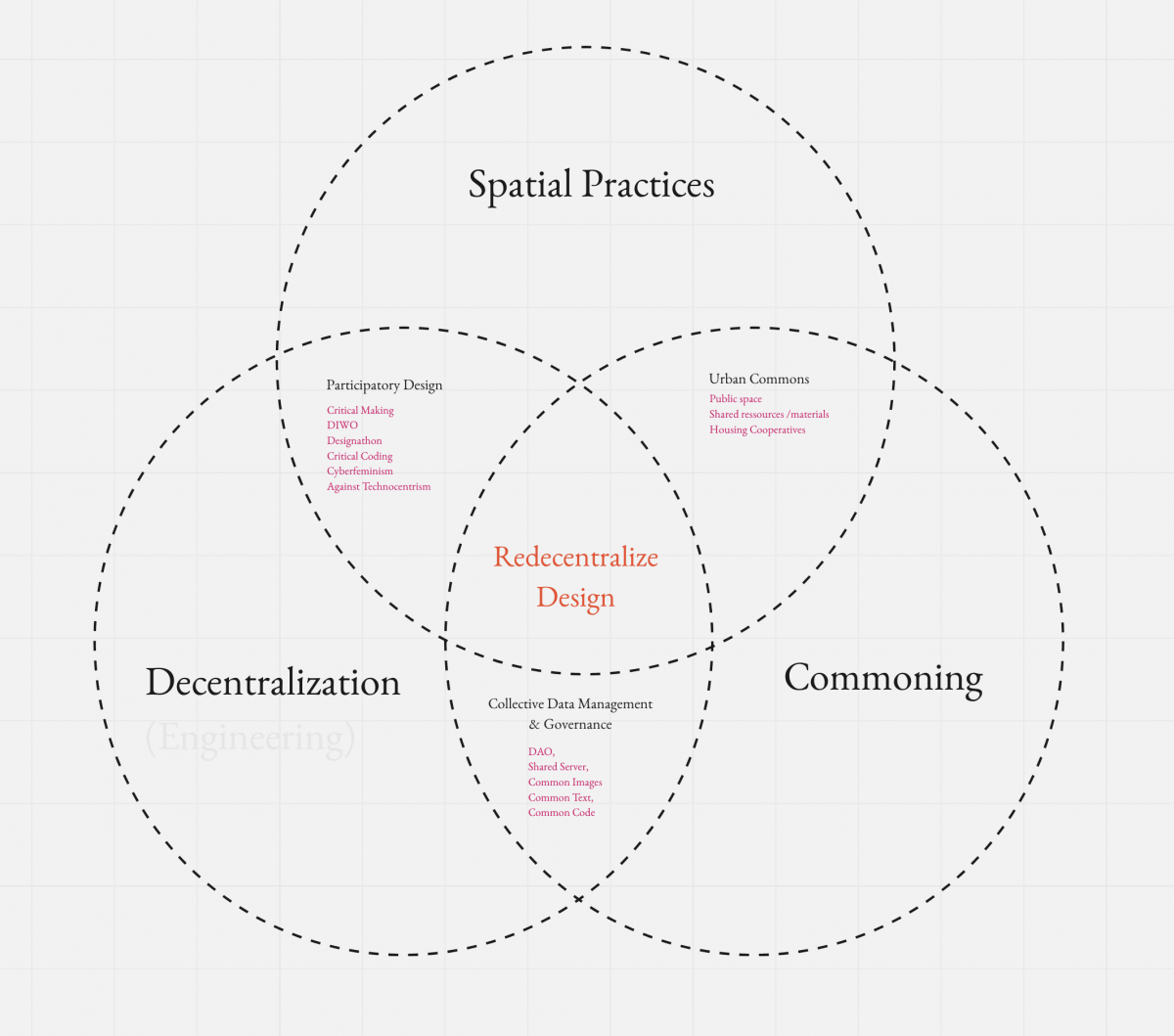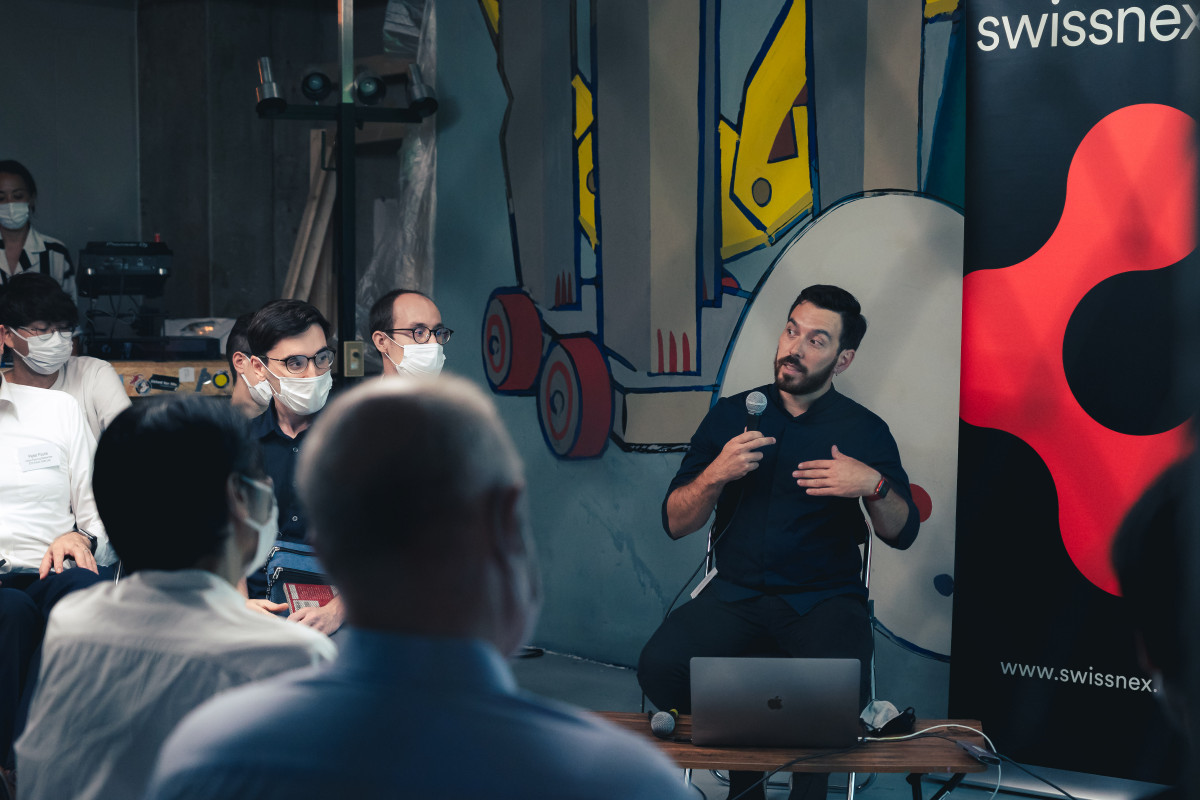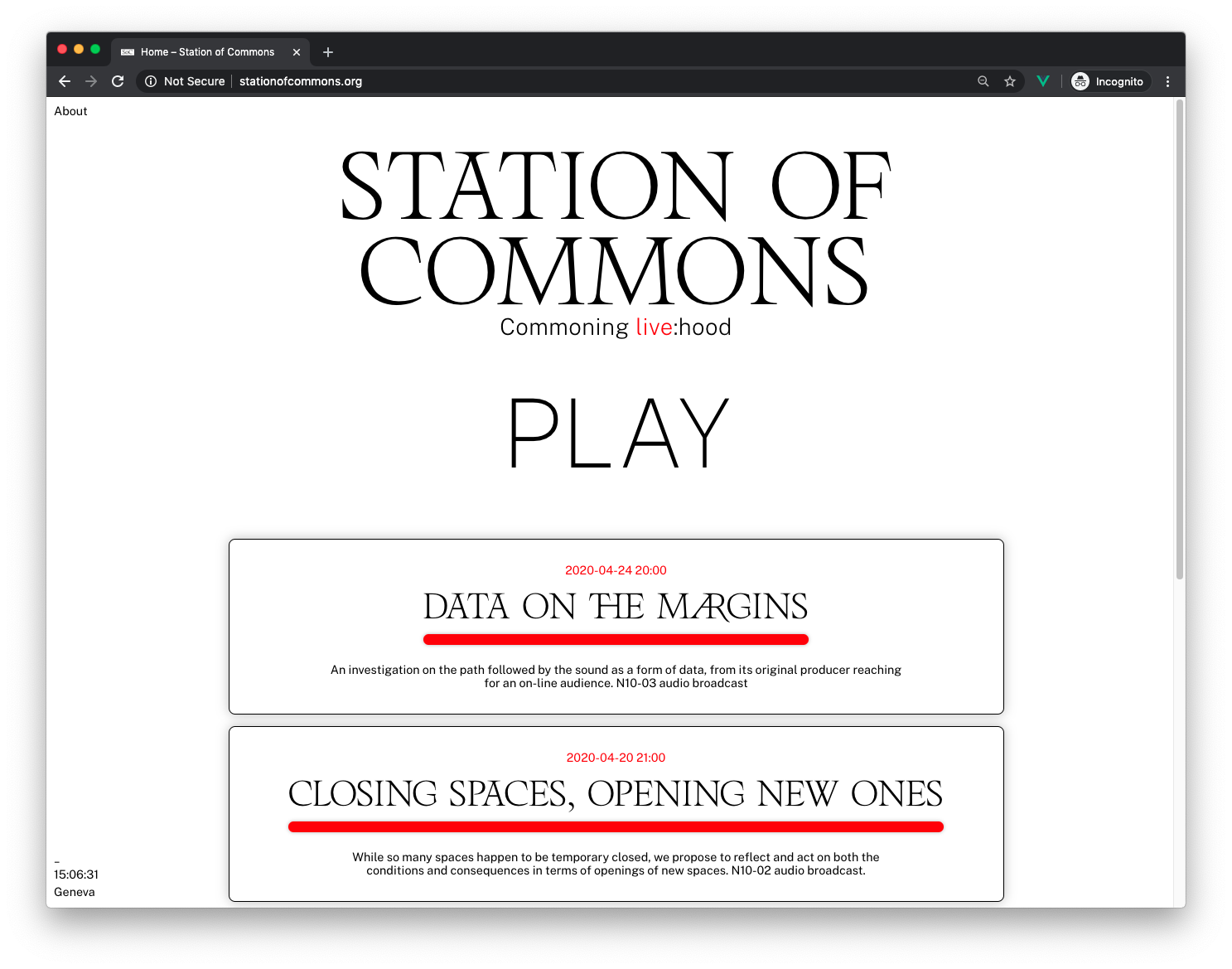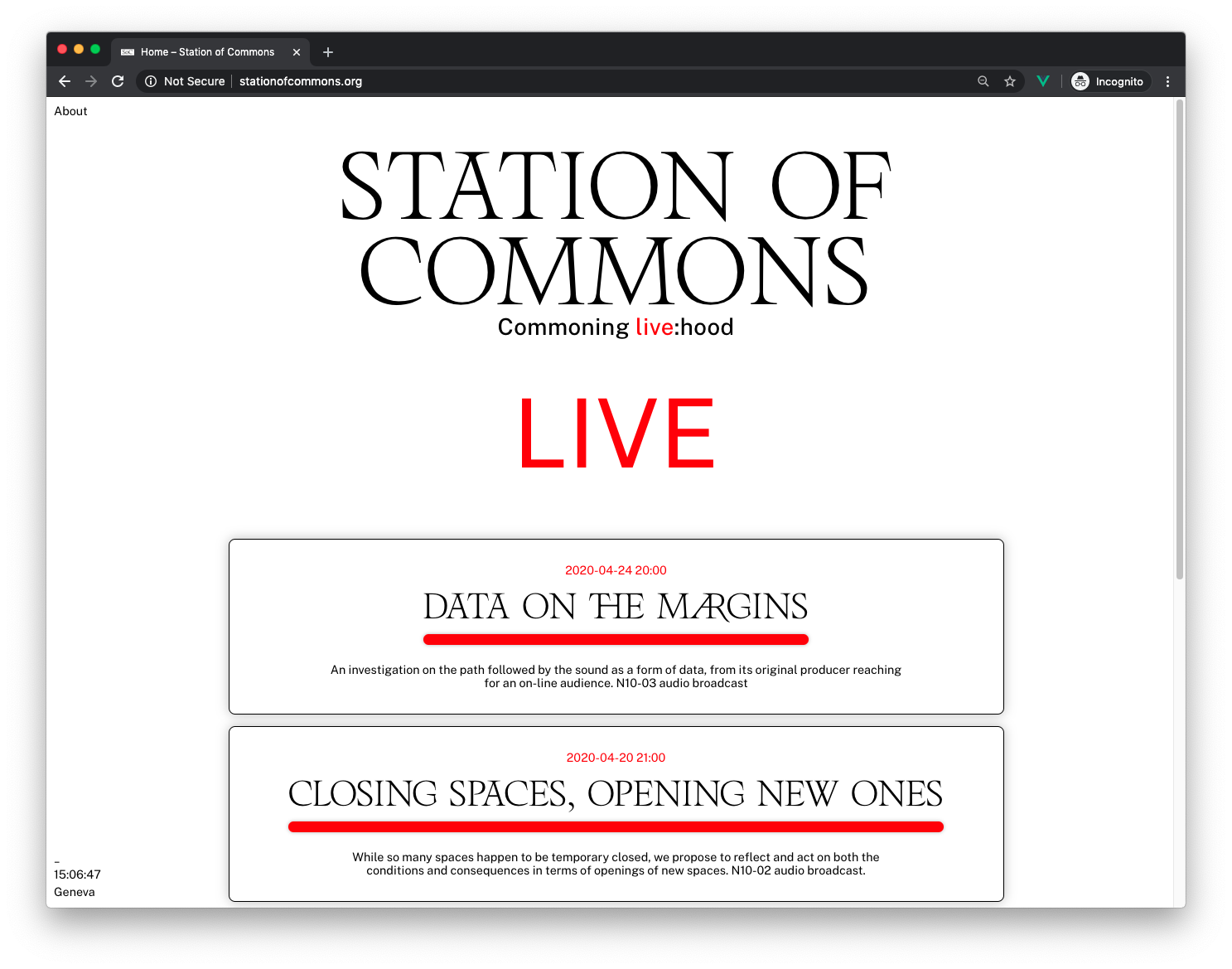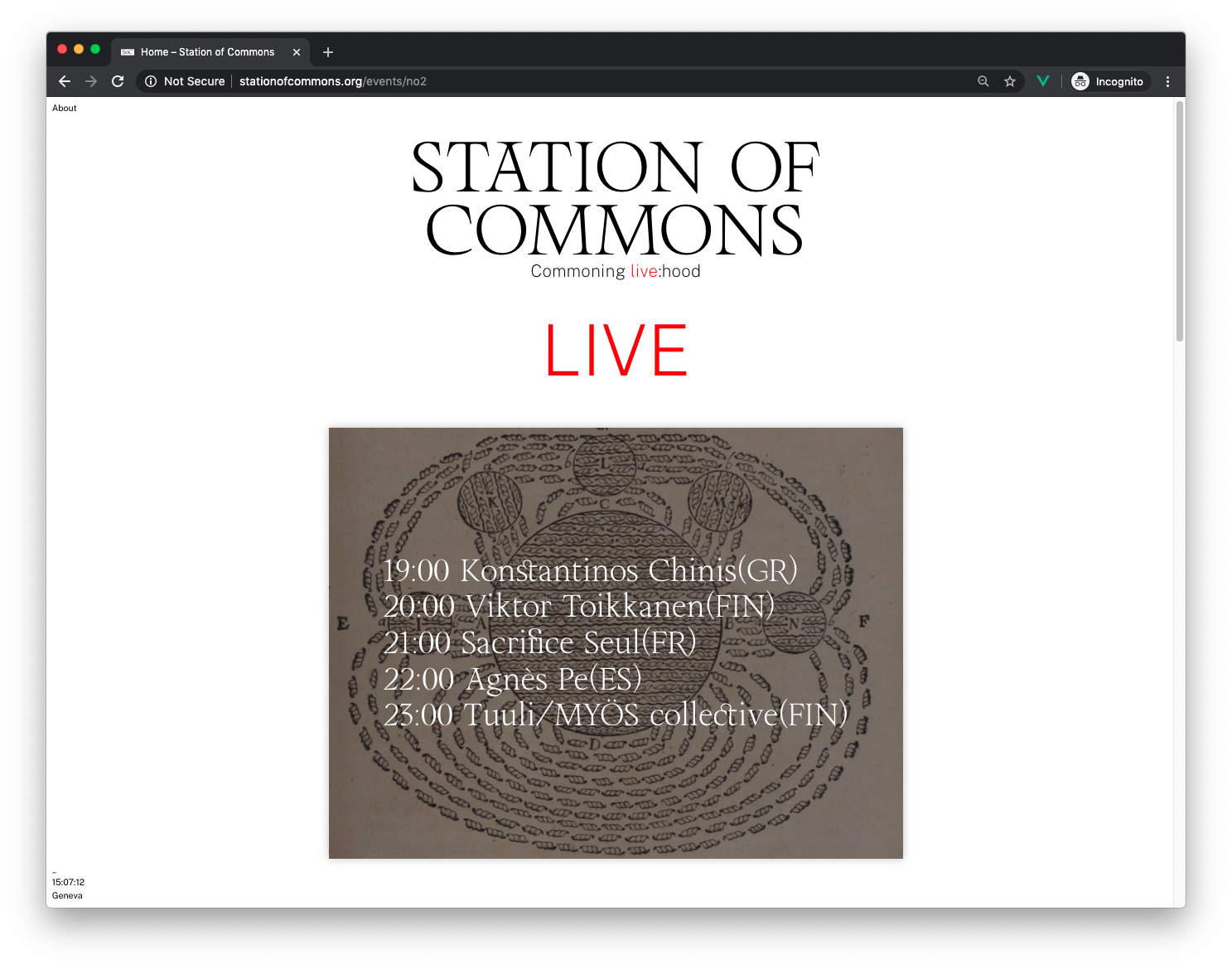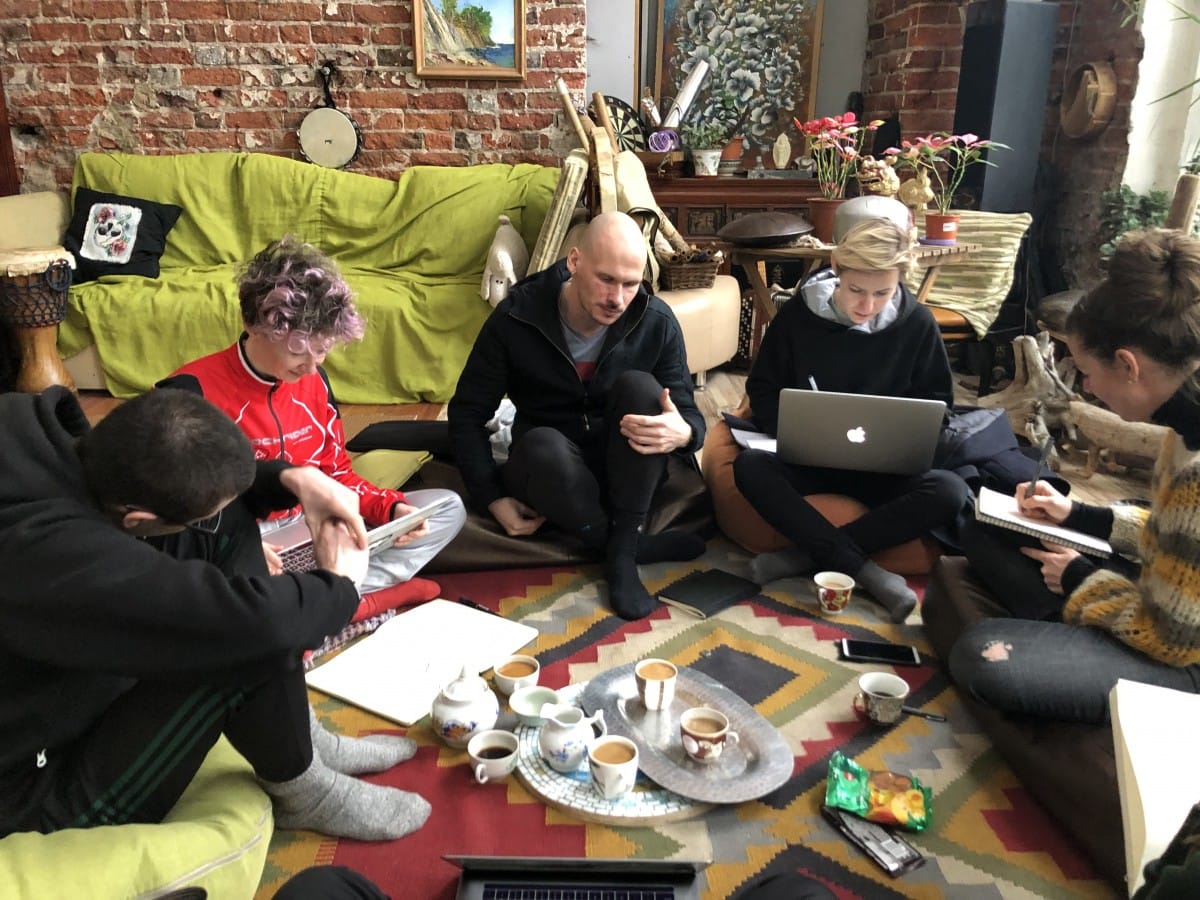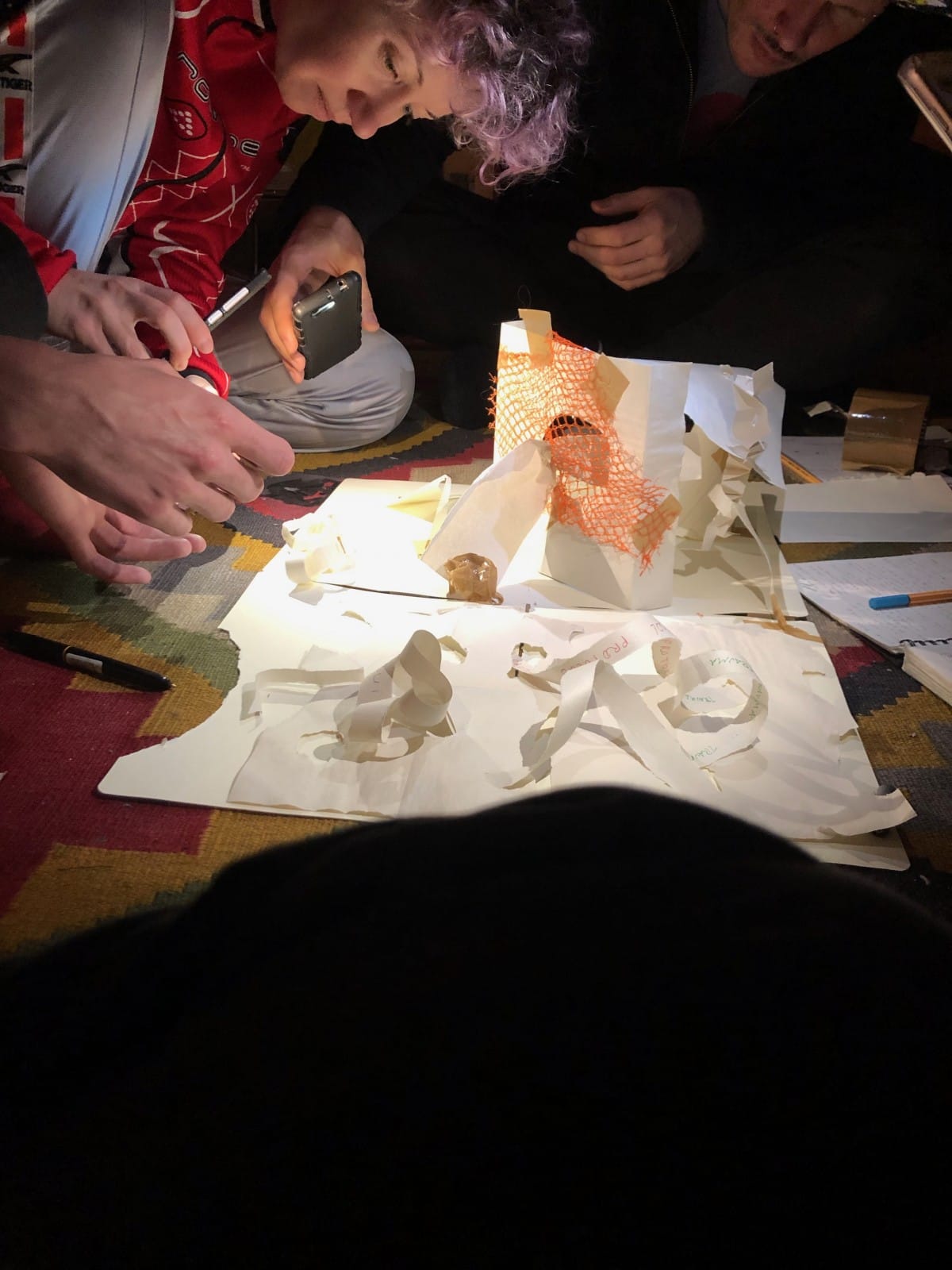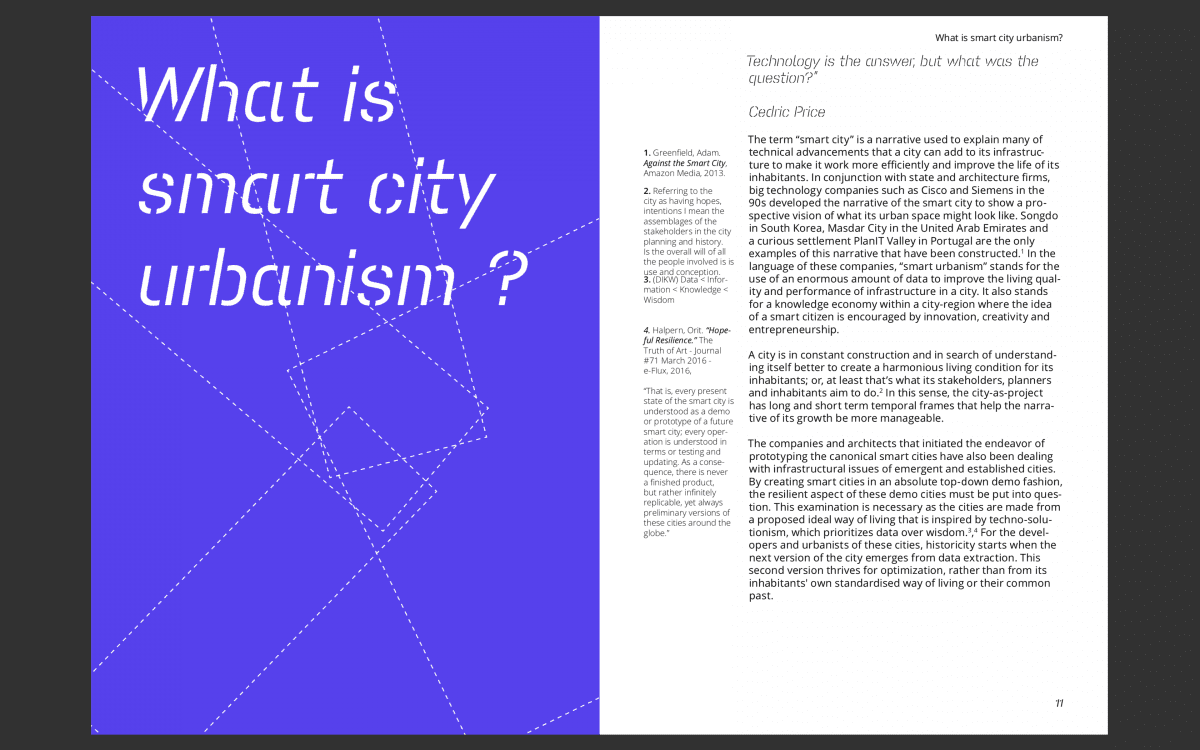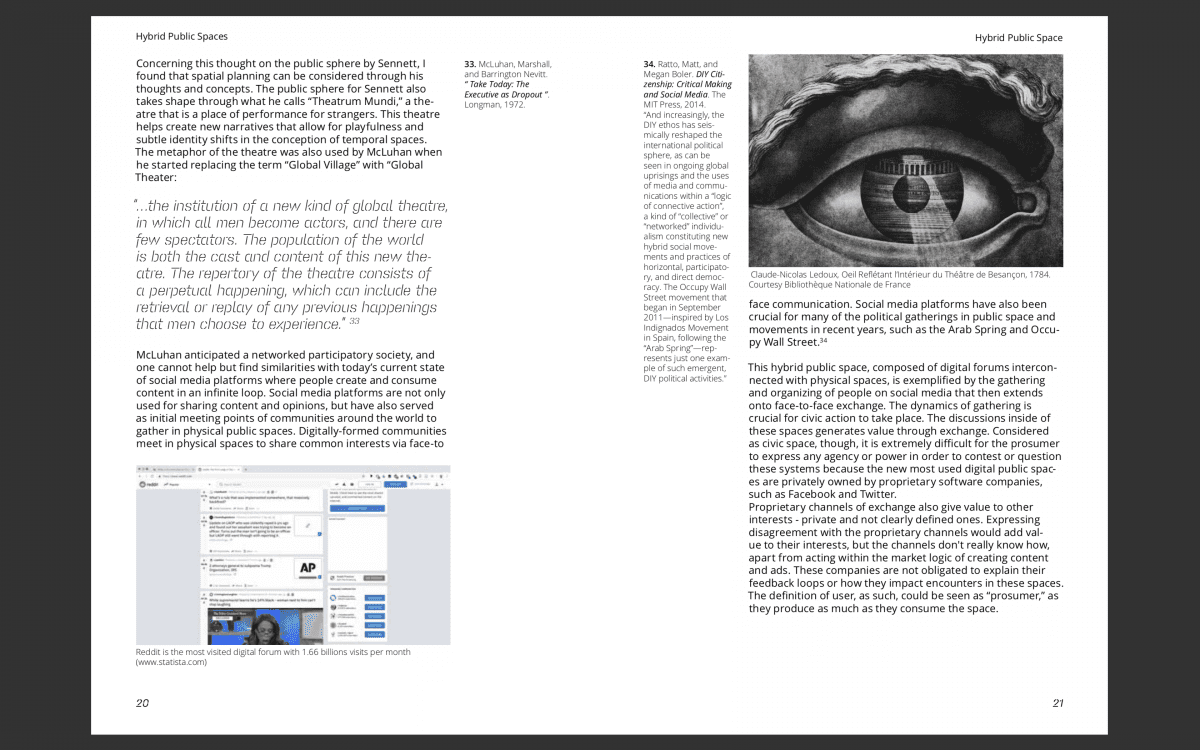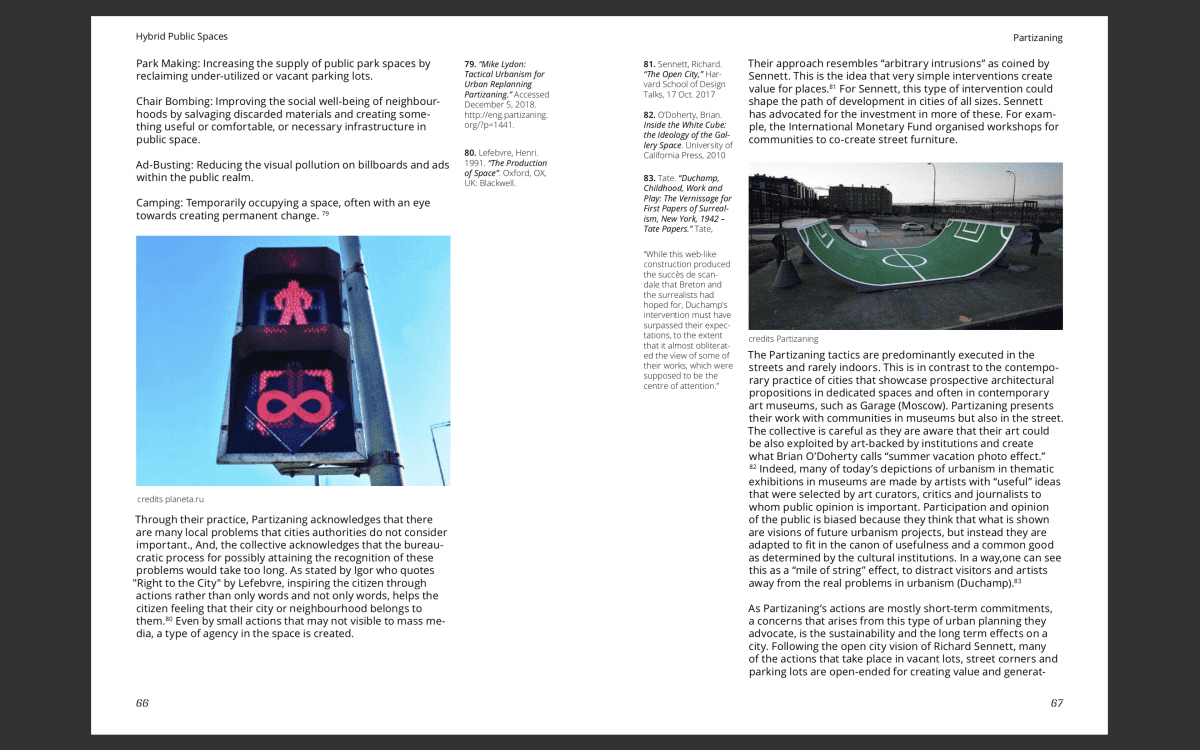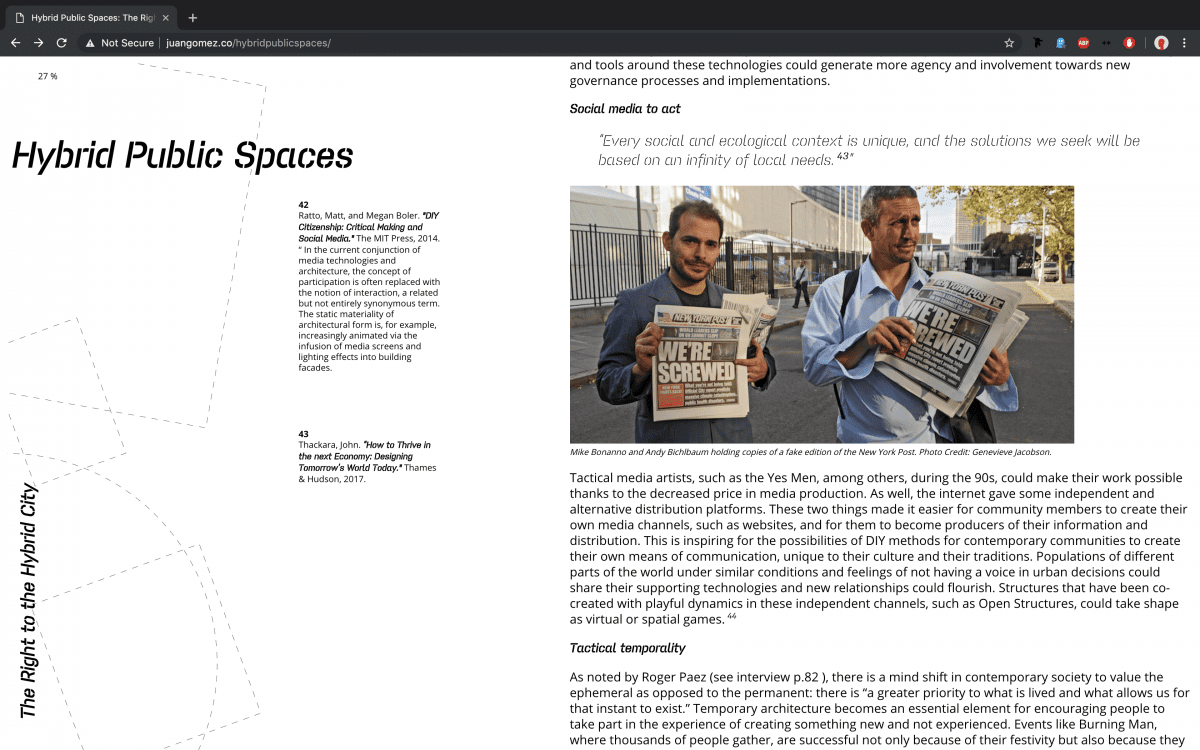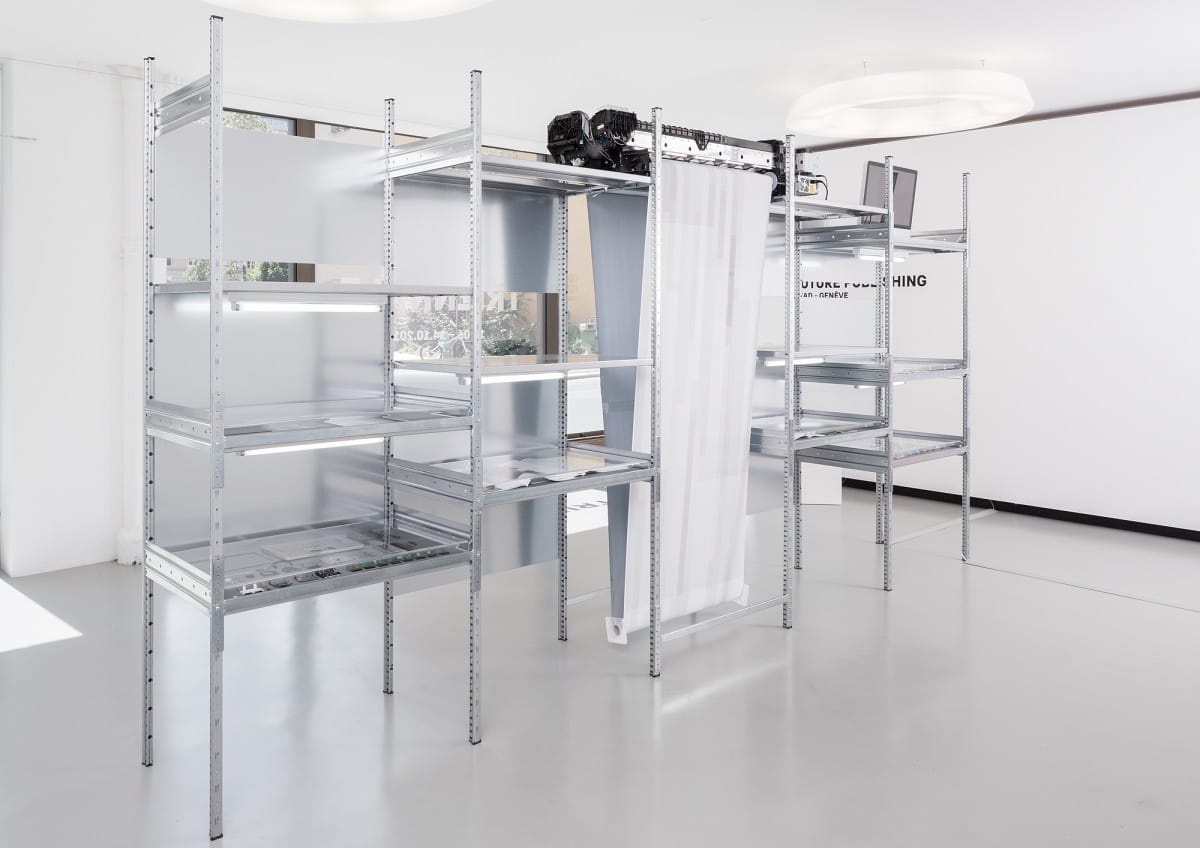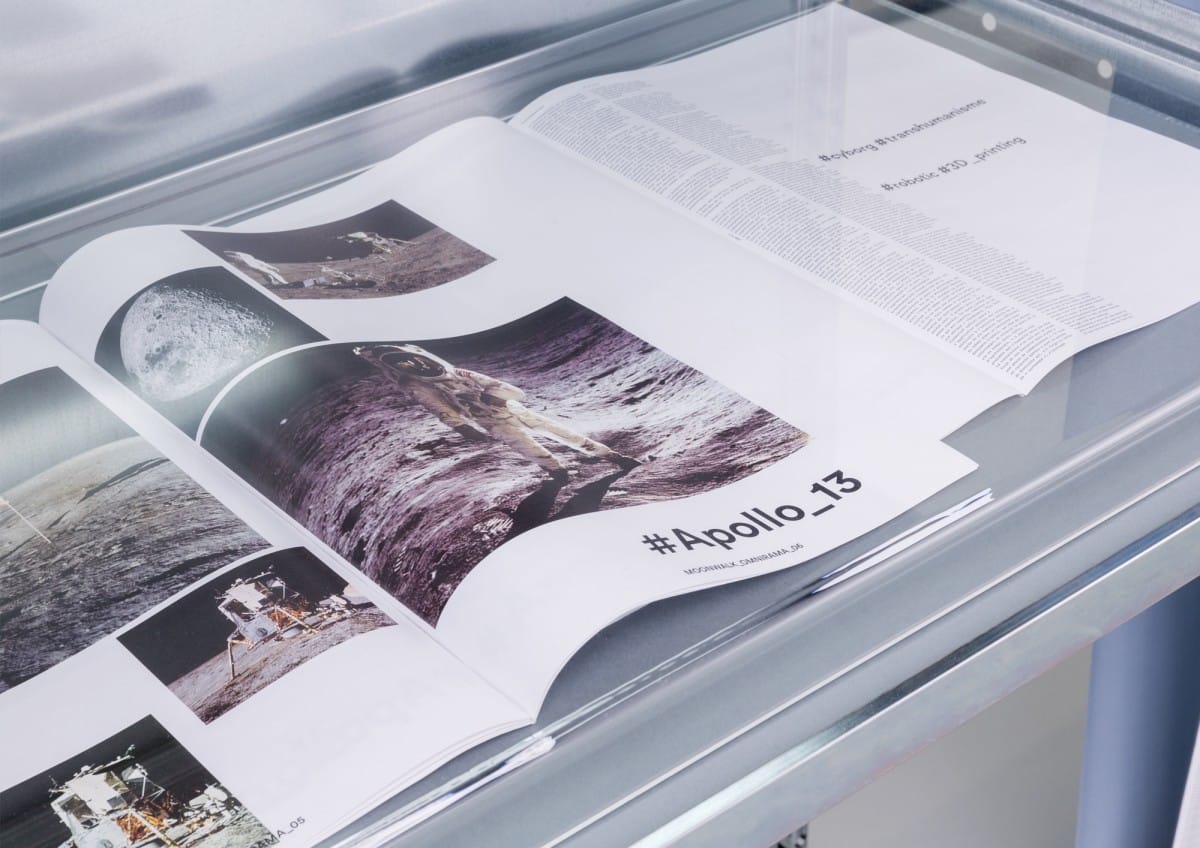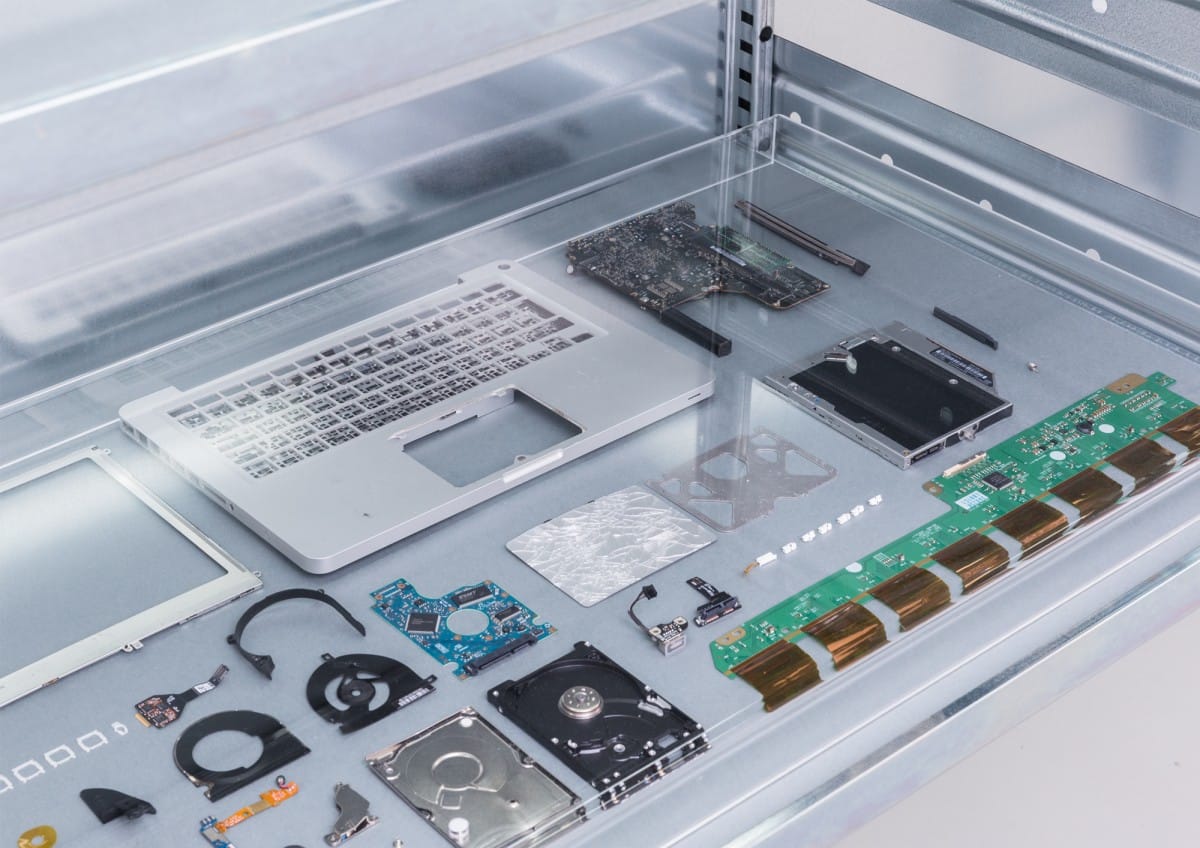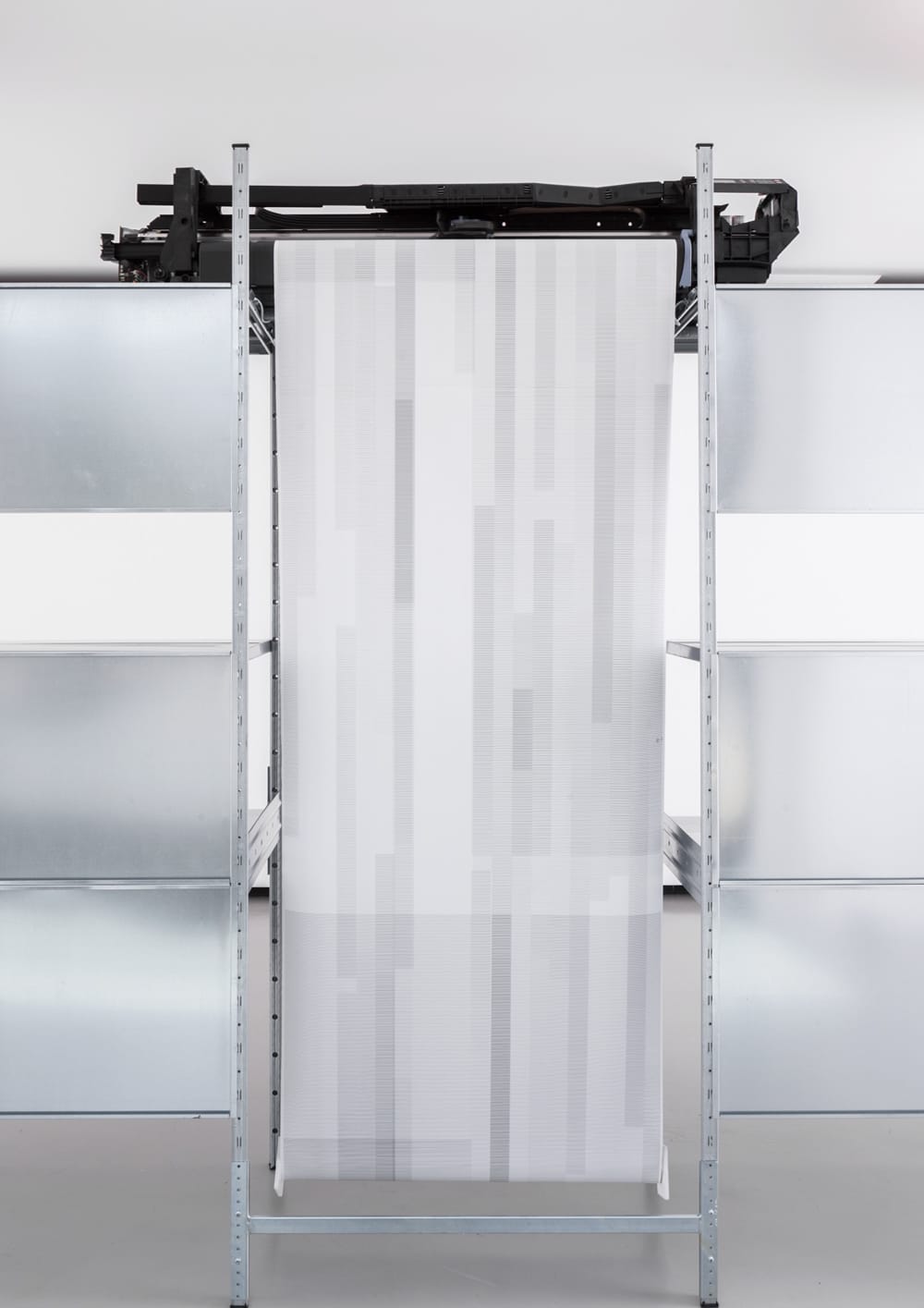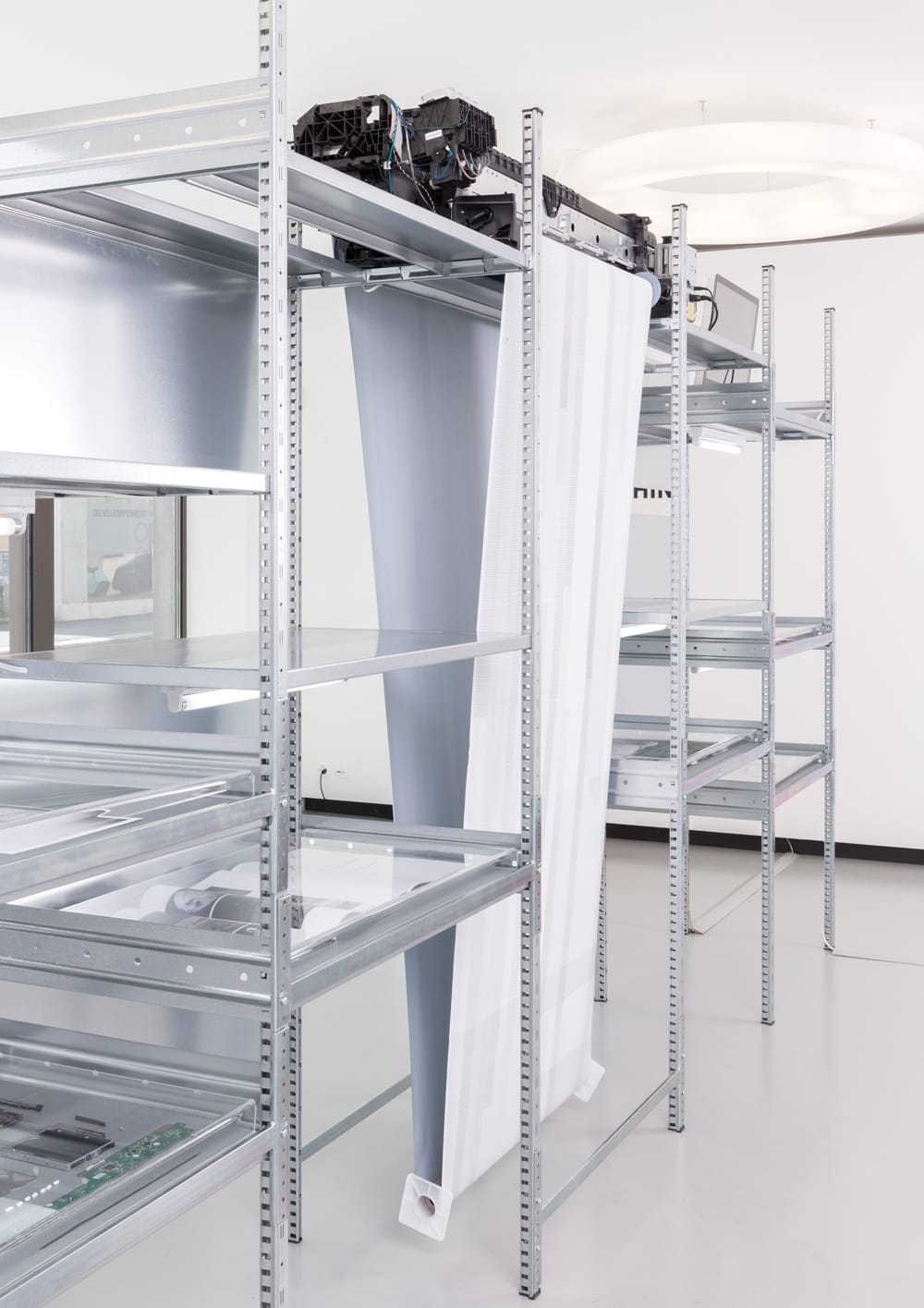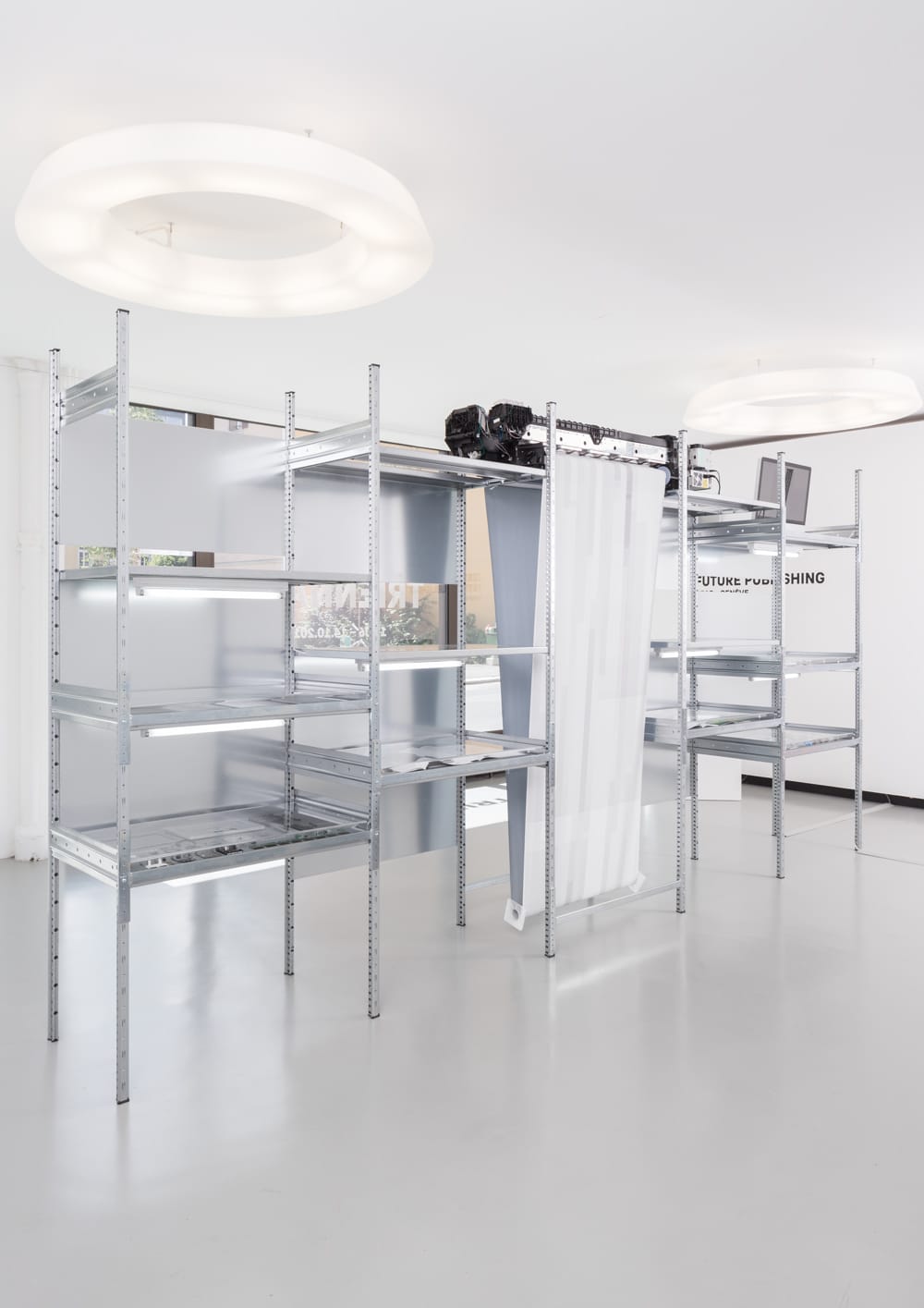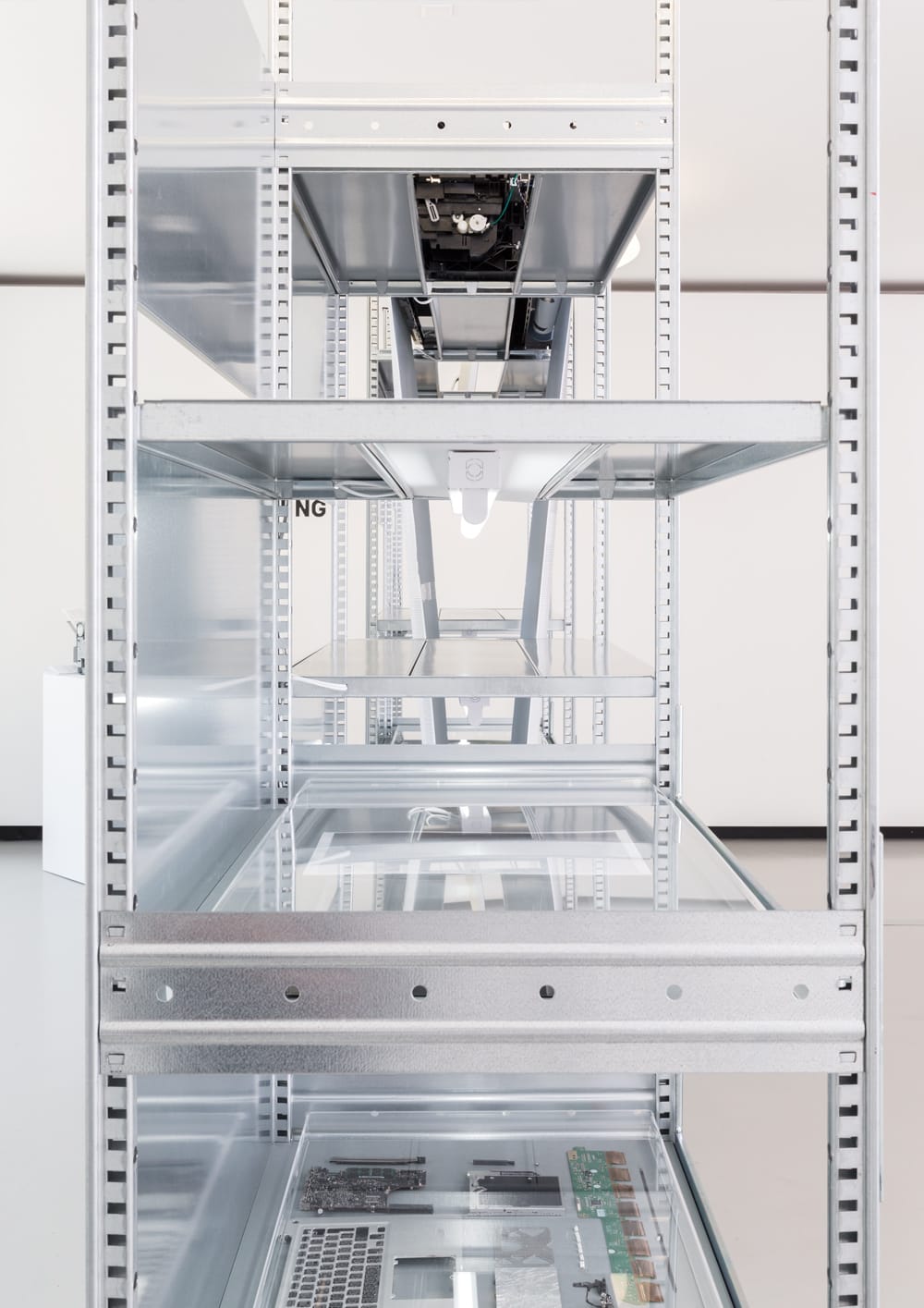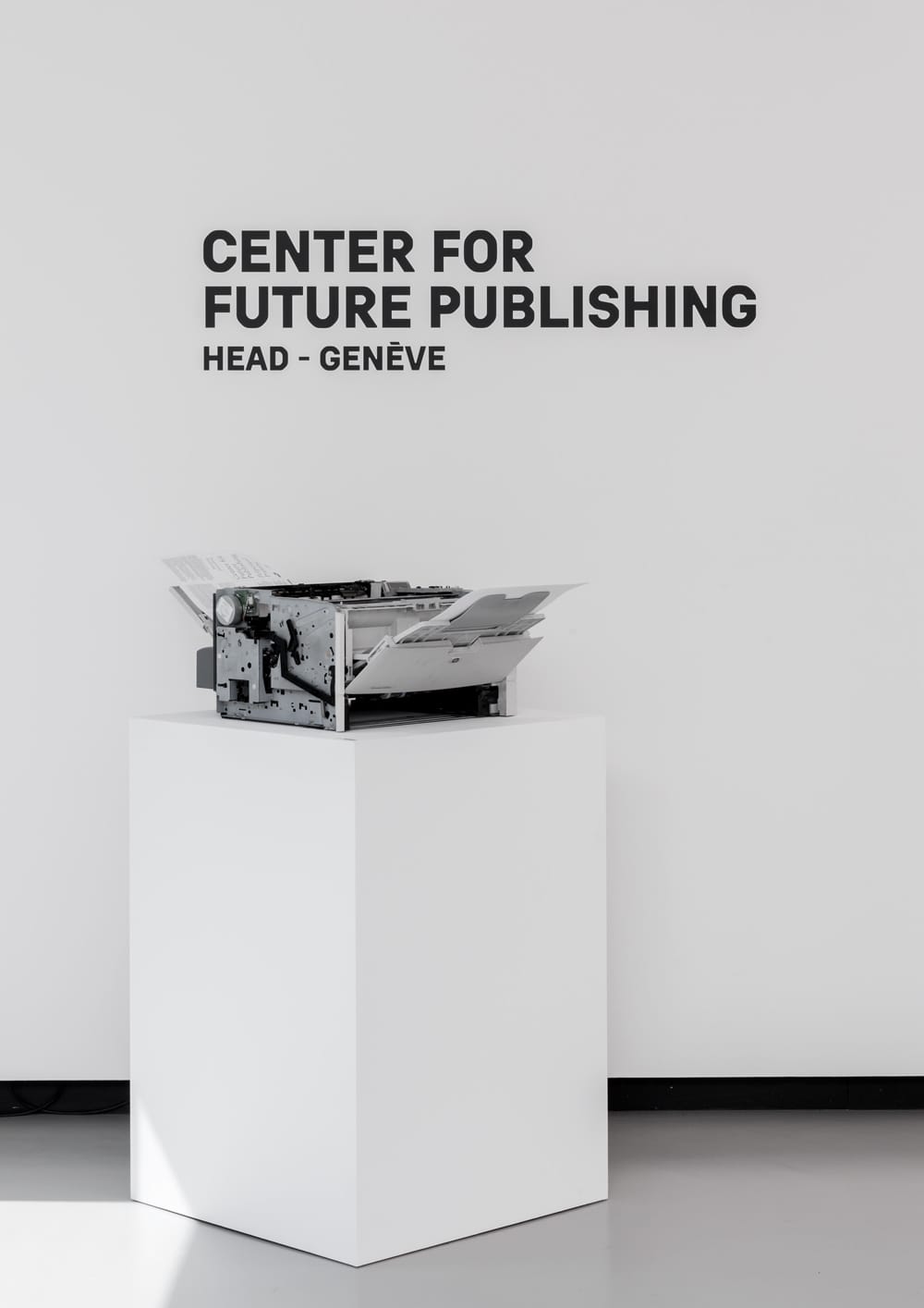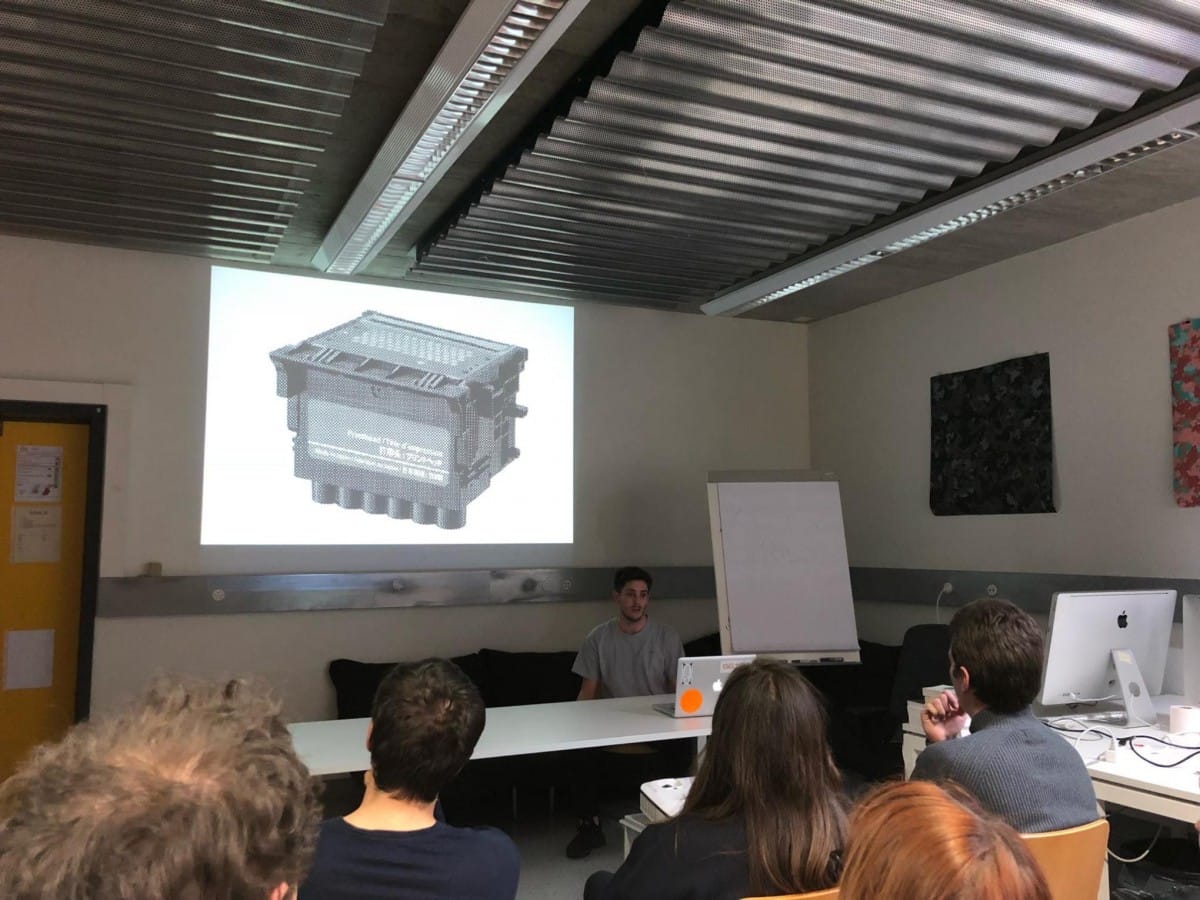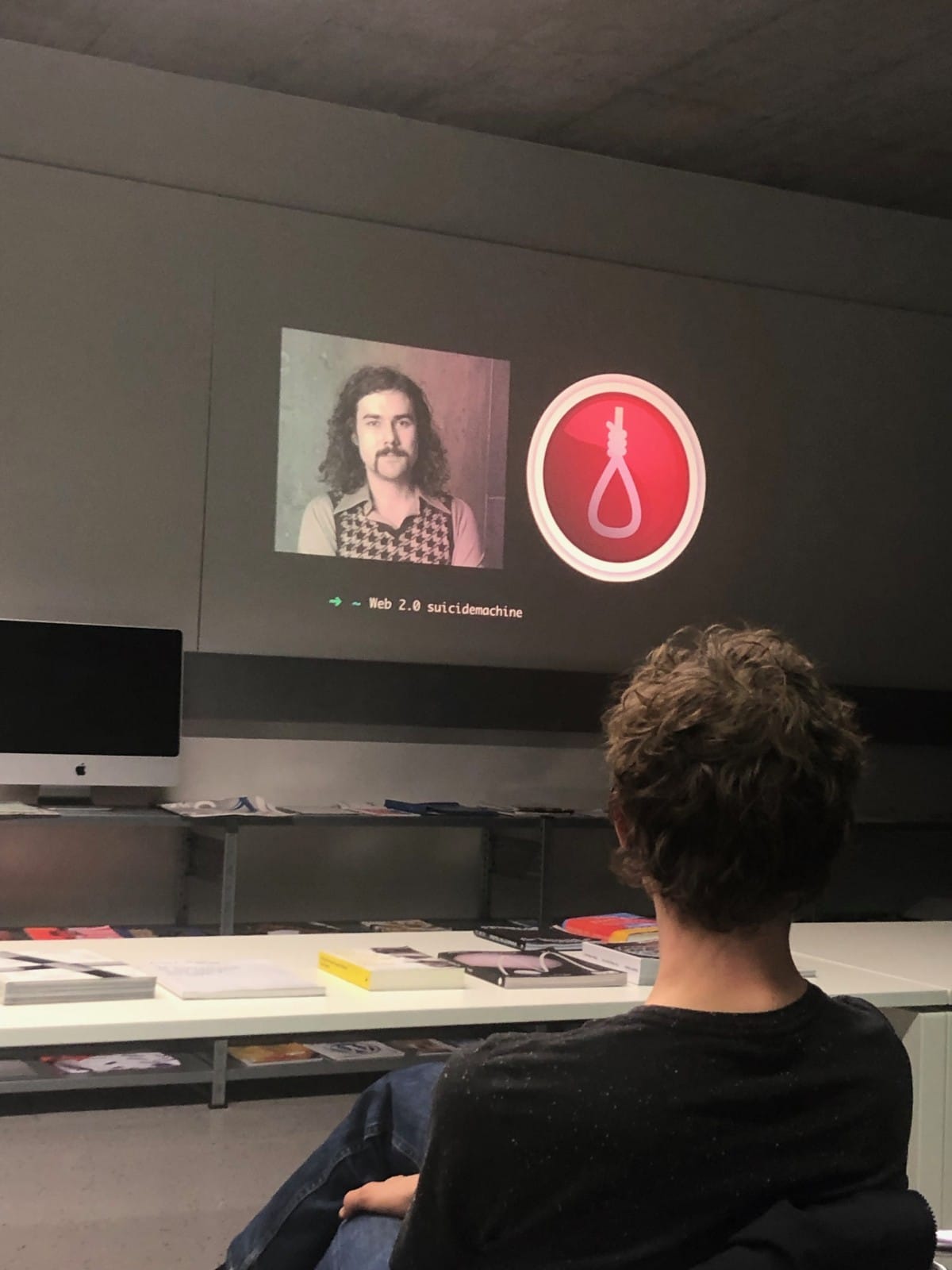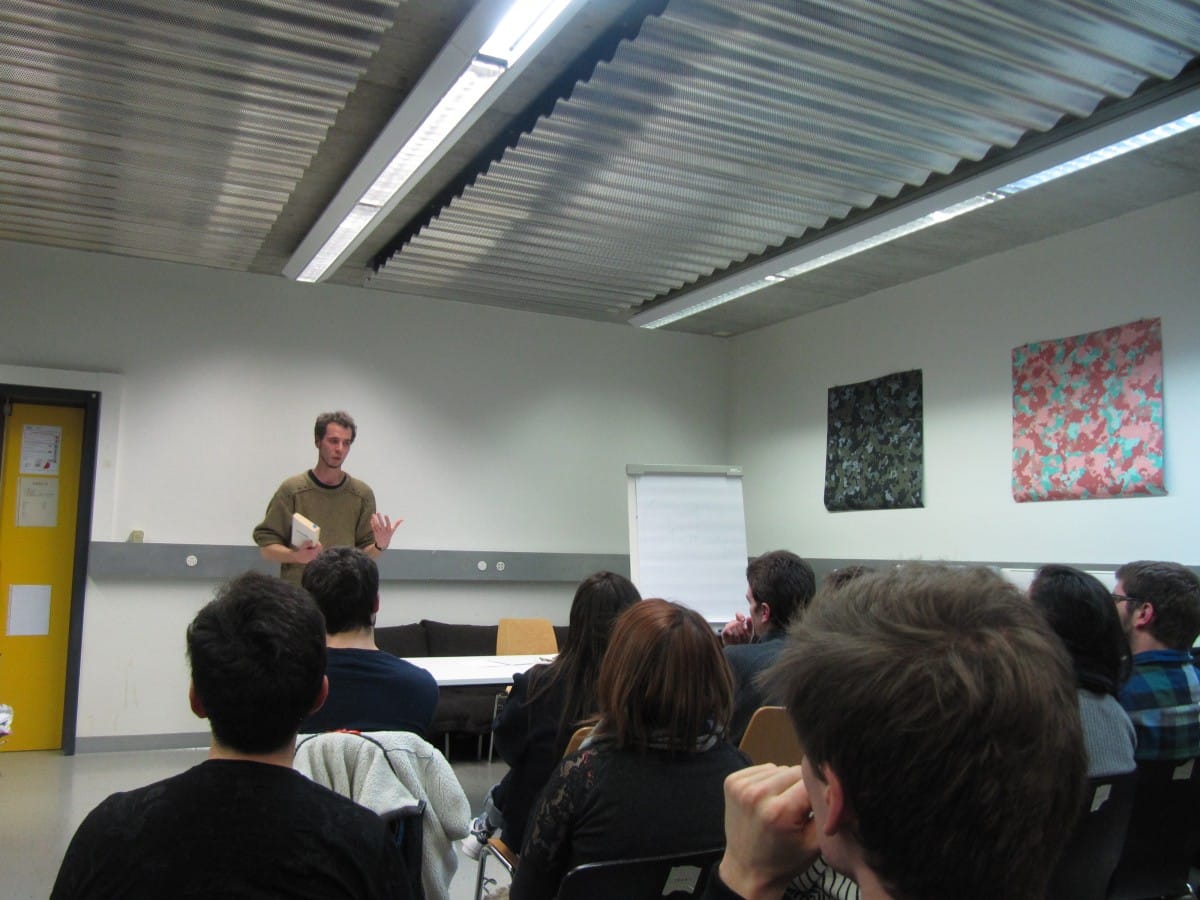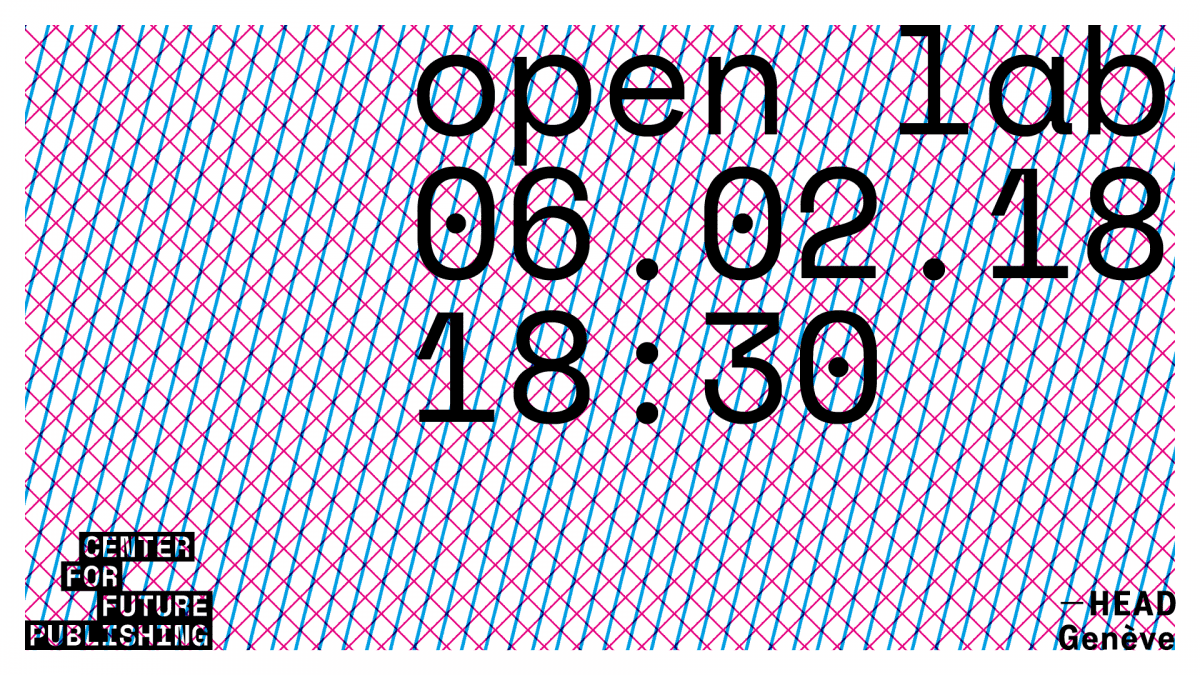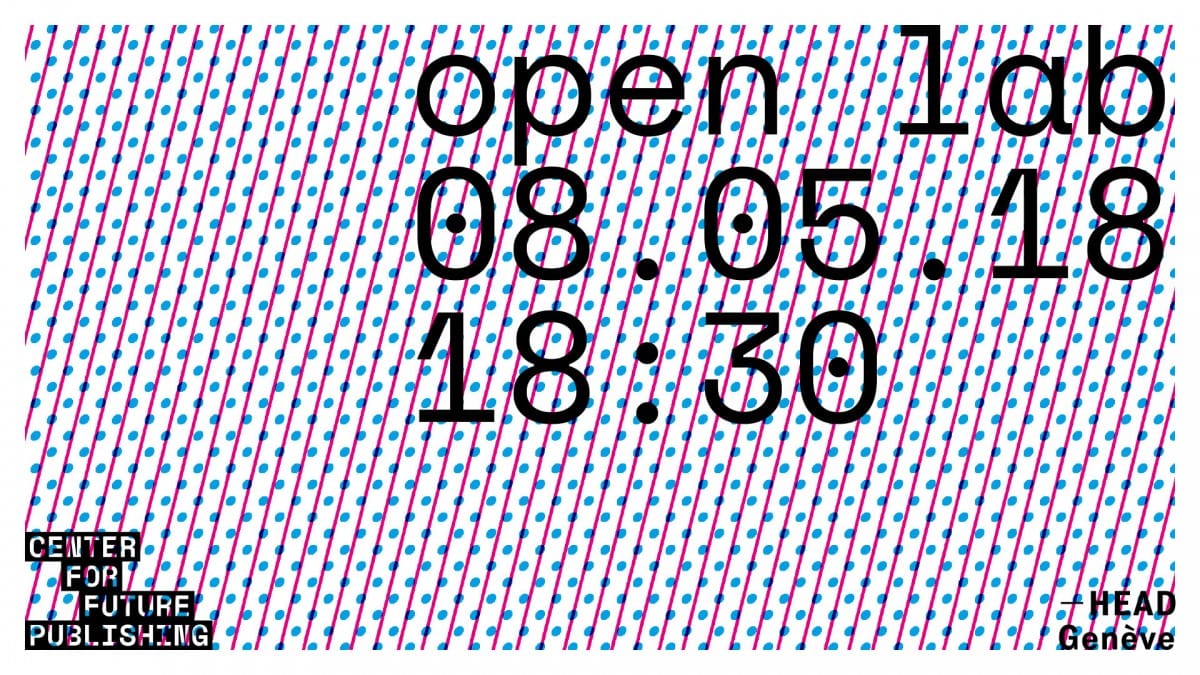Decentralized technologies is a term used to describe digital and spatial technologies which challenge the traditional centralized server model of prevailing software-hardware infrastructures. Examples of this range from Blockchain, which has been implemented successfully as alternative economic models for the current global monetary exchange, community peer to peer WiFi networks for participatory urbanism and more recently websites that could be hosted by their creators and be forked by others seamlessly. Peer to Peer (P2P) is a process or dynamic that can be found in many communities and movements self-organizing around the co-creation of culture and knowledge. Examples of this are the free/open source software movements and the Open Design and Open Source Architecture movement.
The history of informatics has been shaped by a constant flux between decentralized phases and centralizing phases such as the one experienced today with GAFAM and BATX, accumulating value over the exchanges of users and data on the web. Endeavours of centralization are also seen in the plans of some actors to propose urbanistic master plans through network infrastructures with the promise of efficiency. Decentralized technologies have been designed with a set of principles and values that contrast with the current political, labor and social ones of today’s world and are potentially the tools for a new phase of informatics.
This project proposal elaborates on an action based design research, operating a practical and theoretical inquiry on the roles of decentralized technologies and Peer to Peer networks within creative practices. The research aims to expand these artistic and design fields/practices from a technical perspective/standpoint producing both new knowledge and forms of social scenarios.
How could P2P protocols, decentralized technologies and open source principles be used in the context of spatial design practices? How could this impact the current methodologies put in place?
How could designers understand then appropriate these technologies for rethinking their workflows or adding them in their toolkit to solve design problems? How can designers’ methods help communicate the challenges of these technologies to the public, outside of academia?
P2P Technologies by definition pose contraindications to current political and social dynamics; how are designers being affected by them? What speculative scenarios of collective design work could emerge from decentralized principles?
category
phd thesis, practice based, decentralisation in design
date
2020-09-01
context
head
localisation
geneva
collaborator
tutors: anthony masure (head) & jeffrey huang (epfl)
Station of Commons investigates the possibilities of reappropriating technology within public space. The point of departure of the research questions both centralized knowledge and data centers operated by major organizations and its underlying social implications. What are the interdependences between the users, the providers, the services, the technology and related knowledge at work? And how to rethink another model of shared empowerment situated in time and space unique to its agent, or communities?
A Station of Commons operates as easily integrable on-line platform for sharing local resources. Resources as commons integrate the ideas of shared data, Open Source practices, artefacts and real time broadcast. The sustainability of exchange, the ways they interoperate, the ecologies of interaction between the Stations of Commons produce provocations for a better collective understanding on how the Commons are in constant flux and also at risk.
Each Station depends on its own means of production, way of thinking, learning and sharing. This position of autonomy reflects on the original concept of Internet: the equality in the relation client to server and the openness of the algorithmic process. The Station of Commons operates as a vibrant thinking space dedicated for tutorials, live performances and critical discussions around the practice of commoning and open technologies.
What is Station of Commons platform?
A agency of artistic digital practices, knowledge and know-how's to rethink means of production, communication and distribution using Open Source technology. The scope encompasses sound art broadcast, formal work on-line visual content publishing, research on new forms of collaborative and social network.
A space to for discursive forms with actors questioning commons and technology to represent a great diversity of knowledges and practices; architects, radical educator, media theorist, hacktivist, curators, musicians and artists exploring digital forms.
A series Situated Tutorials to provide both context and technical solutions for specific needs using open source technologies: create an audio server to broadcast over internet, create an local stream over Virtual Private Network, data migration from large scale private server to federated or community based platforms.
Station of Commons provides technical guidance and support for local communities to implement related Open Technology needs and inquiries.
A Station of Commons operates as a decentralized network of nodes that uses Internet without its hegemonic agency.
Subjects to explore
A reappropriation is never total, otherwise it would be a mere copy. The new production must modify, détourne, work with the subject matter.
The research on material to use RaspberryPi with various Linux distribution, and open source software.
The visual narratives of tutorials as ways of sharing contextualized practical and theoretical concepts.
The "gentrification" of software production and their relationship to contemporary architectural narratives.
How to think a temporally multi-dimensional space ?
How to define the precise subject matter within technological space taken into account the different temporalities ?
What is a critical practice of digital space in terms of labor, relation to institutions, radical political position ?
category
commoning practices, open source tools, situated tutorials
date
2020-02-01
context
personal
localisation
geneva
collaborator
Dear ༻,
You have just experienced Burnout. You were chosen to go to the recreation room of High-Tech Park, a special economic zone where IT-workers become embodied outsourced life hours. A place squeezed between a forest with acaridaes, science campus, museum of stones, institute for geophysics and a belt-road.
In order to deal with post-Burnout trauma you would need to practice radical hybridity, deep alienation and self-augmentation. Use this time to dishabituate of what you have learned and experienced.
During 3 days together with 6 other participants you will have a “recovery period”. We will practice the communalization of stress, overcoming the pessimistic visions of futures. To do this, we will try to build our own vision of “futurism” together, but we must take into account the materiality of what is happening with our bodies and environment, so among ourselves we call it “holed futurism”.
Self-augmentation
Remember last time you felt damaged or traumatized. Remember last time you or your fellow have been burned out. I am asking you to remember the most intensive moments from your life. Remember as many details as you can. It’s useful to make notes to be more concrete. How did you feel? How deep were you tired afterwards? Did you feel ill or cheated? Think how mental injure was entangled with your body. Your social body. Techno-body. Think about others who could have the same traumas. What is similar? What is the difference? Why should you have such traumatized experience?
Remember when your body created a “self-generating catastrophe”. What was it? Can a catastrophe happened somewhere between your brain, body and networks you are in, be part of your imagination?
Try to look behind the horizon, place yourself in the position of a node in the plethora of nowadays. What would you like to dishabituate? If you could be someone else who or what it could be?
You are invited to have more agency to design your trauma, to curate your trauma as the possible escape from the techno-medical solutionist narrative that has been built to overcome burnout and return you to the neoliberal form of creative knowledge production.
Think about burnout accident that could take place with your new character, write it down and then tell the others. To put it simpler you can answer the following questions:
Did you work for one of High-Tech Park companies or science campus, or the casino nearby, or a hotel or a library? Were you an outsourcer working from another country? What were your responsibilities? Or an insect living in the Museum of Stones? Were you a machine? Or a pure/messy abstraction like an assemblage of time-modelling algorithms in hyper-trading systems developed there? When was your burnout? How did it look like? How long are you attending this recreation room?
We will try to create a collective “science-fiction of the present day”, implementing our imaginaries into the skin of Guslica environment thinking about this place in a translocal approach.
Yours,
eeefff
category
research residency
date
2019-02-04
context
personal
localisation
moscow
collaborator
ekaterina butorina (saint petersburg)
nicolay novikov (saint petersburg)
patricia reed (ottawa/berlin)
nicolay spesivtsev (minsk/moscow)
anna tokareva (london)
dzina zhuk (minsk/moscow)
Master thesis supervised by Lysianne Lechot-Hirt in 2018 for completing the master Media Design @ HEAD Geneva.
online version
printed version
This text provides an overview and comparative analysis of select contemporary methods used in smart urbanism in physical spaces. It aims to contribute a critical understanding of best practices in contemporary urbanism and public space.
By drawing on interviews with practitioners, including artists, designers, architects, and software developers; and by conducting the comparative analysis of three cases, this research provides new and sometimes opposing perspectives on the issue of smart urbanism. The diverse methods that are examined are broad and I will try to establish a typology.
Issues of decision making for public space can be divided into bottom-up and top-down planning. Bottom-up planning prioritises the hyper-local and top-down planning prioritises a master plan that is commonly developed from an institutional point of view.
The interviewees and the case studies are situated in between these two planning methodologies. Hopefully, this way of proceeding will show how these two types of urbanisms are not exclusive to each other. In working together, they may be able to create a better dialogue for the process of place making in public space and lighten the number of points to be discussed in this process.
The rise of many of DIY and guerrilla urbanism practices can be attributed to the lack of involvement of inhabitants and users of public spaces in their co-creation. As well, the lack of legal structures that facilitate temporary intervention or activities in public spaces has contributed to the rise of DIY and guerrilla urbanism.
The three case studies were chosen to better understand positive practices for participatory methods for conceptualising, designing and implementing the cases' proposals. Two examples come from Western European cities and one is based in Russia, but with outcomes that are global. Despite many efforts of diverse local or national authorities for establishing participative processes in urban decisions, there does not seem to exist a rule of thumb for creating an open hybrid channel - that is, one that is both digital and physical - for civic discussion about the future issues of the city. This essay intends to be the basis for a developing hypothesis on how a hybrid public space could exist.
Drawing from texts by Richard Sennett and other thinkers dealing with the concepts of the Public Sphere and the commons, I share freely this research, its references and documentation in depth on a dedicated website to be published in January 2019: https:/juangomez.co/hybridpublicspaces.
This thesis aims to help users of public space understand the digital infrastructural narratives presented by many private and institutional stakeholders, as well as citizen and independent initiatives for the use and co-creation of public space
category
master thesis, research
date
2018-12-13
context
head
localisation
geneva
The only obstacle to perpetual printing is the entropy of the equipment. A stripped, dismantled HP DesignJet 500 inkjet printer shows its inner nature, fragile, made of motors, cables, and mechanical parts. The primary functions are reversed. The machine does not produce only one page at a time but on a loop, thus creating blurry print on an 8 m2 motion screen.
The paper management system, the sensors, and the cartridges have been hacked through a programme that defies the industrial process. An algorithm fuels its action that is minimal and reduced to the essential: a horizontal line. The noise becomes a line, the line becomes a sound, time transforms them into music concrète. The fragmented sign prints and overprints itself without pausing, generating a random, perpetually changing the composition.
The display device, a large metal modular system, acts as a support structure for the central “Perpetual Printing” piece as well as an archive and a place for sharing the various experiments that the Center carries out. Among the disassembled screens, screws, publications and color samples, student projects tell the story of two years of activity at CfFP.
category
research
date
2018-06-15
context
center for future publishing
localisation
geneva
collaborator
pierre-alain giesser
jérôme baratelli
gaëtan stierlin
david héritier
pierre rossel
demian conrad.
During one year I participated on the research "Places en relation" Initiated by Civic City. My work was making the digital archive of the year-long research as well as coordinating the exhibition and hub of the research at the Theatre St-Gervais (GE).
An important part of the research was the documentation made on the "Classe Virtuelle" where every Monday the members of the research make a video conference call for discussing the advancement of the research.
The research was presented at the Center Georges Pompidou(FR) and is currently exhibited at Strasbourg(FR)
Some links to follow up the research:
http://civic-city.org/places
https://www.pscp.tv/civiccity/
category
research
date
2017-09-15
context
integral ruedi baur
localisation
geneva
critical insights into the ways in which innovation may expose and be complemented with a form of violence
category
research texts
date
2018-01-24
context
head
localisation
geneva
